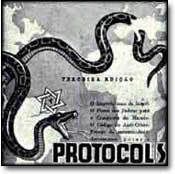Twenty-five years ago this past weekend, a large-scale popular uprising by Palestinians began against Israel’s then 20-year-old military occupation of the West Bank, East Jerusalem, and Gaza. Sparked by an incident in which four Palestinians were hit and killed by an Israeli driving in Gaza on December 8, 1987, Palestinian frustration at living under repressive Israeli military rule and Israel’s growing colonial settlement enterprise erupted, grabbing international headlines and drawing attention to the plight of Palestinians living in the occupied territories. On this 25th anniversary, the IMEU offers the following fact sheet on the First Intifada.
Tuesday, 11 December 2012
Fact Sheet: 25th anniversary of the First Intifada
Facts and figures
During the First Intifada,
Palestinians employ tactics such as unarmed demonstrations, including
rock throwing against soldiers, commercial strikes, a refusal to pay
taxes to Israeli authorities, and other acts of civil disobedience and
nonviolent resistance. They are coordinated largely by grassroots ad hoc committees of Palestinians in the occupied territories rather than the PLO leadership abroad.
In response, Israeli soldiers use brutal
force to repress the mostly unarmed popular rebellion. Then Defense
Minister Yitzhak Rabin implements the infamous “broken bones” policy, ordering security forces to break the limbs [WARNING: Graphic video] of rock-throwing Palestinians and other demonstrators.
More than 1000
Palestinians are killed by Israeli forces during the First Intifada,
including 237 children under the age of 17. Many tens of thousands more
are injured.
According to an estimate by the Swedish branch of Save the Children, as many as 29,900 children
require medical treatment for injuries caused by beatings from Israeli
soldiers during the first two years of the Intifada alone. Nearly a
third of them are aged ten or under. Save the Children also estimates
that between 6500-8500 Palestinian minors are wounded by Israeli gunfire
in the first two years of the Intifada.
In 2000 it is revealed that
between 1988 and 1992 Israel’s internal security force, the Shin Bet,
systematically tortures Palestinians using methods that go beyond what
is allowable under government guidelines for “moderate physical
pressure,” Israel’s official euphemism for torture. These methods
include violent shaking, tying prisoners into painful positions for long
periods, subjecting them to extreme heat and cold, and severe beatings,
including kicking. At least 10 Palestinians die and hundreds of others
are maimed as a result.
Approximately 120,000 Palestinians are imprisoned by Israel during the First Intifada.
In 1987, Hamas is founded in Gaza, formed
from the Palestinian branch of the Egyptian Muslim Brotherhood. During
the 1980s, Israeli authorities encourage and tacitly support the
Palestinian Muslim Brotherhood and Hamas, viewing them as a
counterweight to the secular nationalists of the PLO, part of a strategy
of divide and conquer.
In 1992, in the face of protests from the international community, including the UN Security Council through Resolution 799,
Israel deports more than 400 suspected members of Hamas and Islamic
Jihad to southern Lebanon, including one of the founders of Hamas,
Mahmoud Zahar, and Ismail Haniyeh, Hamas’ top leader in Gaza today.
Refused entry by the Lebanese government, which doesn’t want to confer
legitimacy on Israel’s illegal deportation of Palestinians, the exiles
spend a harsh winter outside in a no-man’s land limbo. Many observers
consider this a turning point for Hamas, whose members are given
assistance to survive by the Lebanese paramilitary group Hezbollah. In
addition to basic sustenance, Hezbollah gives the Palestinians advice
and military training honed during a decade of struggle against Israel’s
occupation of Lebanon that began following the bloody Israeli invasion
of 1982. Hamas subsequently begins to use suicide bombers against
Israeli targets, a tactic that was a signature of Hezbollah’s resistance
to Israel’s occupation. Under pressure from the US, Israel agrees to
let the exiled Palestinians return to the occupied territories in 1993.
The First Intifada gradually tapers off in
the face of brutal Israeli repression and political co-optation by the
PLO, ending by 1993.
Political repercussions: Madrid, Oslo and beyond Continue Reading
Posted @
18:27
![]()
Subscribe to:
Post Comments (Atom)
![[9_10_s22.jpg]](https://blogger.googleusercontent.com/img/b/R29vZ2xl/AVvXsEjTXnQay9wzz0E6nVHrVhaHKoq_zYXDqZjijHlNDQzj90MZzInrCuVX4ciFYCiBfZ7lhlgr2bBhhnl7ddWbhdih5JbXjQYbA605TNyiq046bQqjG2A4S-nHTmh1VBTQSG6tmc23wq47QQ/s1600/9_10_s22.jpg)




No comments:
Post a Comment